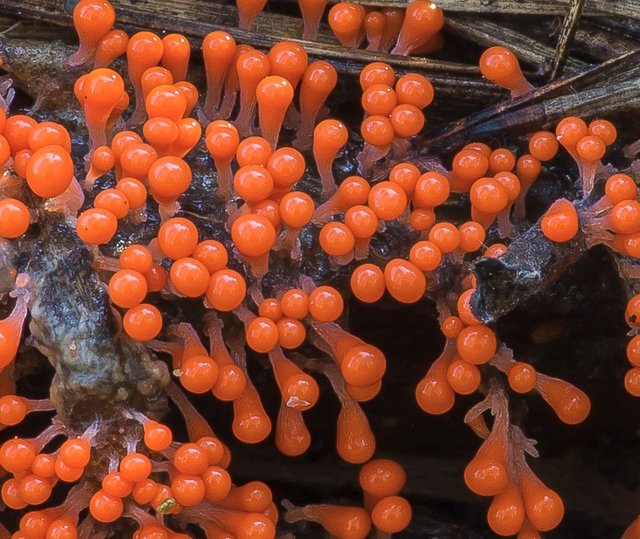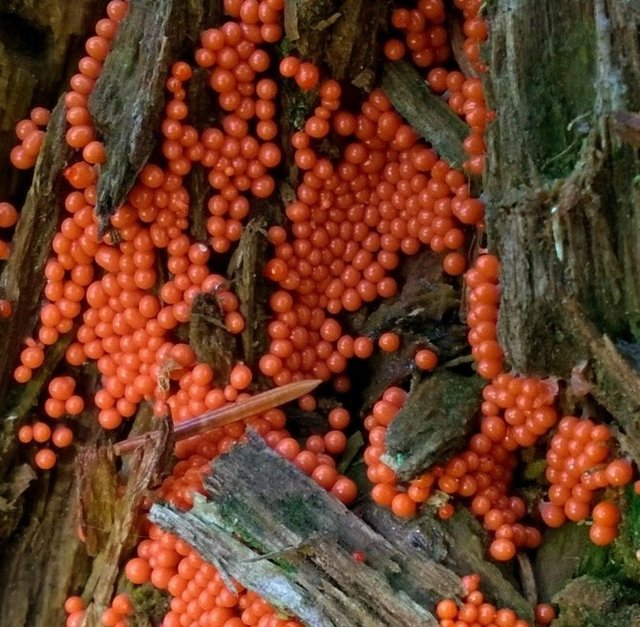Trichia deceptive (Trichia decipiens)
:

:
Type: Protozoa (Protozoa)
Infratype: Myxomycota
Kilasy: Myxomycetes
Order: Trichiales
Family: Trichiaceae
Genus: Trichia (Trichia)
Type: Trichia decipiens (Trichia deceptive)
Trichia deceptive attracts our attention with an unusual appearance. Its fruiting bodies look like bright red-orange or modest olive-brown beads, generously scattered in fairly wet weather on some rotten snag or equally battered stump. The rest of the time, she lives in secluded places in the form of amoeba or plasmodium (a multinuclear vegetative body) and does not catch the eye.

Plasmodium is white, becoming pink or rose-red during maturation. On it in groups, often very numerous, sporangia are formed. They are club-shaped, reverse teardrop-shaped or elongated, up to 3 mm in height and 0,6 – 0,8 mm in diameter (occasionally there are specimens of a more “solid” physique, up to 1,3 mm in diameter), with a shiny surface, red or red-orange, later yellow-brown or yellow-olive, on a short whitish stem.
The shell (peridium) is yellow, membranous, almost transparent in the thinnest parts, thickened in the lower part, after the destruction of the top of the fruiting body it remains in the form of a shallow cup.

Capillium (a fibrous structure that facilitates the dispersal of spores) of a rich olive or olive-yellow color, consists of simple or branching, spirally twisted together in 3-5 pieces, threads (elater), 5-6 microns in diameter, which become thinner at the ends.
The spore mass is olive or olive-yellow, olive-yellow or light yellow in the light. Spores are rounded, 10-13 microns in diameter, with a reticulate, warty or spiny surface.
Trichia deceptive – cosmopolitan. It occurs on decaying softwood and hardwood throughout the growing season (in mild climates all year round).
Photo: Alexander, Maria









